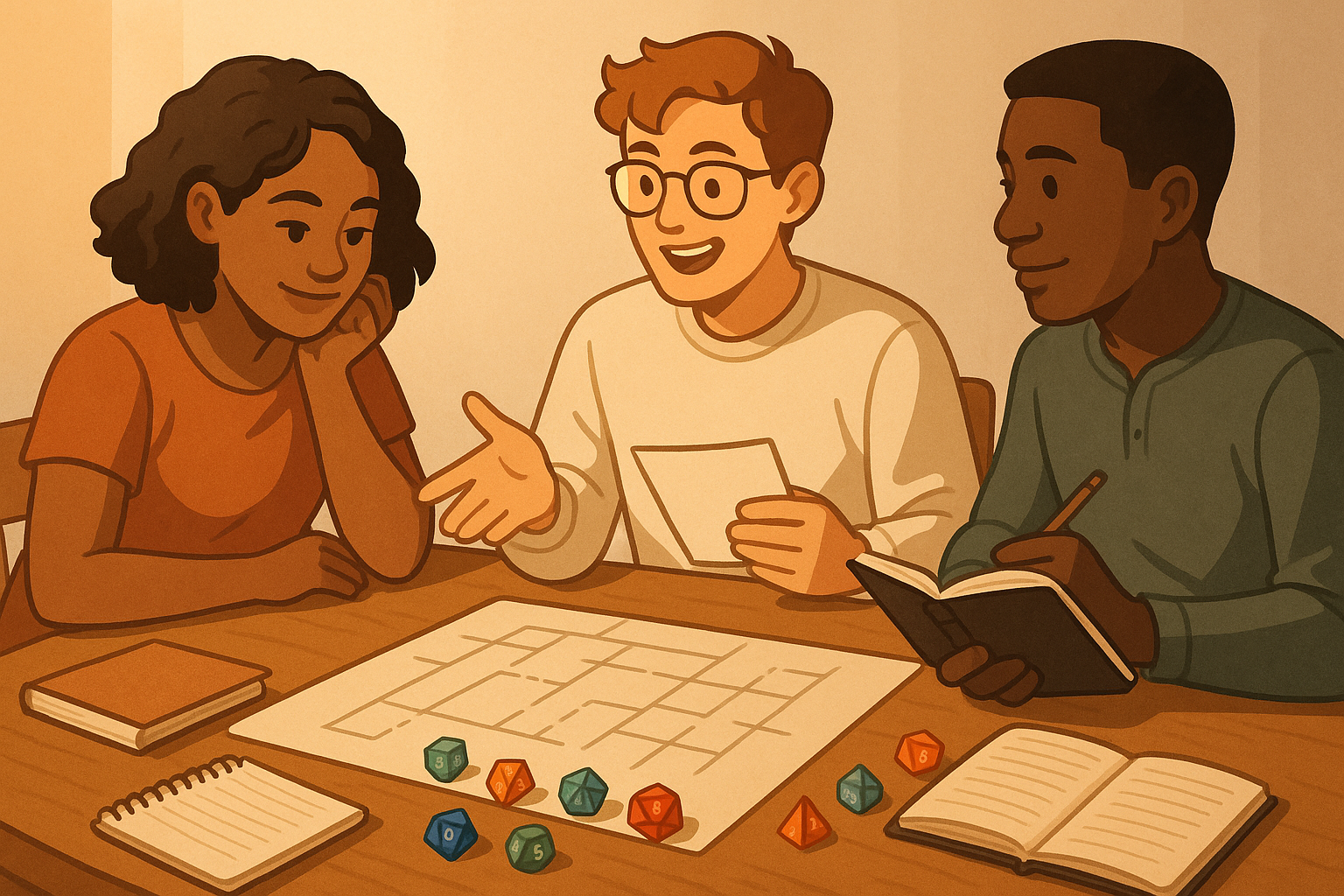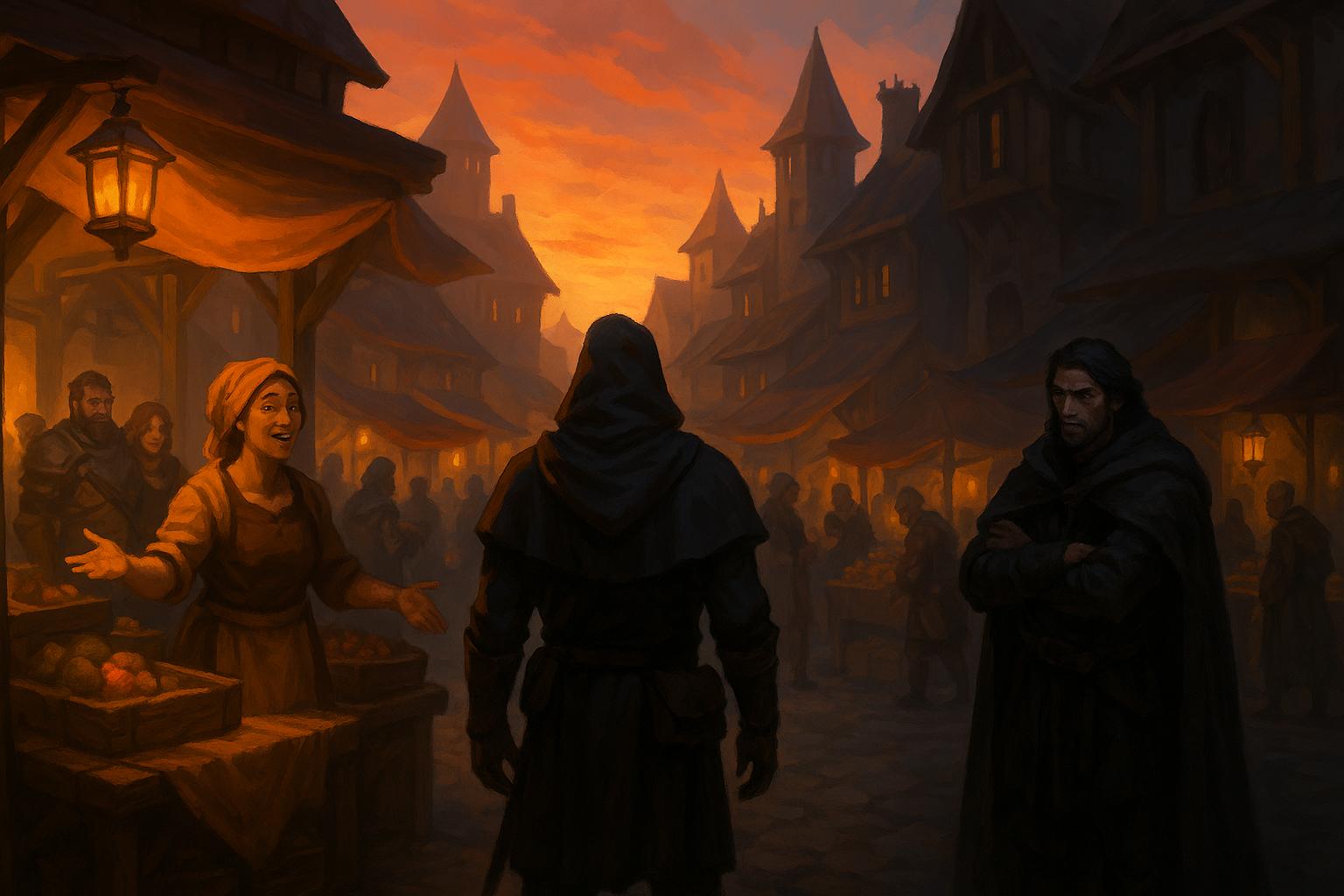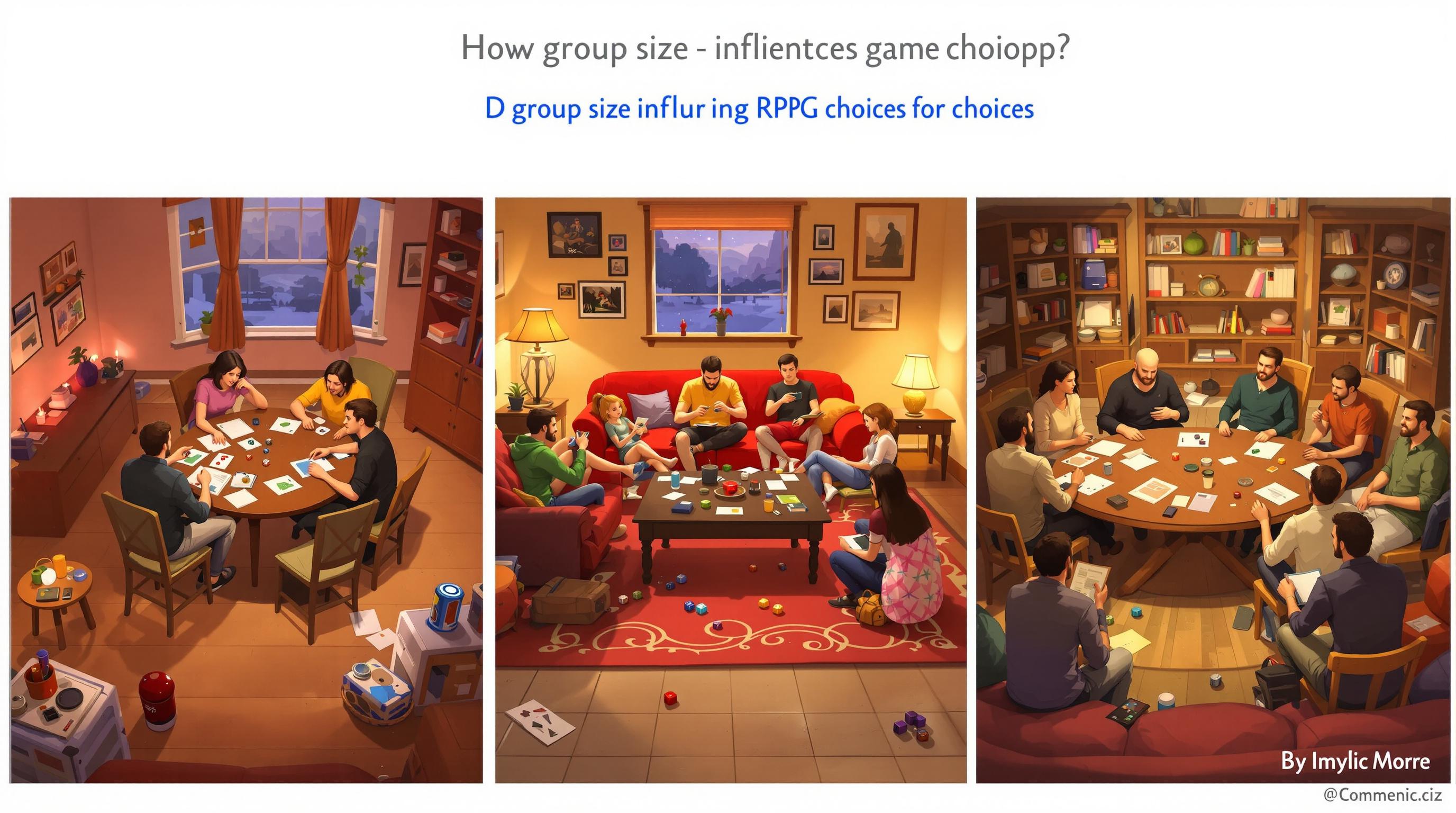A great tactical grid system is all about creating engaging, well-structured combat scenarios where every move matters. It blends clear movement rules, turn-based mechanics, and terrain features to help players make informed decisions during gameplay. Here’s what defines an effective system:
- Grid-Based Movement: Players move within a grid (squares or hexes), with each step impacting strategy. Speed, positioning, and even vertical movement (like elevation) play key roles.
- Turn-Based Combat: Players take turns, allowing time to plan actions. Systems like fixed or dynamic turn orders can influence gameplay depth.
- Terrain and Line of Sight: Obstacles, elevation, and destructible elements shape the battlefield, forcing players to adapt and strategize.
- Clear Character Roles: Balanced character abilities (e.g., fighters for defense, rogues for close-range, mages for area attacks) ensure teamwork and variety.
- Advanced Mechanics: Features like flanking bonuses, reaction systems, and elevation-based strategies add layers of complexity without overwhelming players.
- Flexibility: A good system can handle small skirmishes or large-scale battles, with modular elements for easier customization.
The best systems also integrate combat seamlessly into the story, ensuring battles feel meaningful rather than disconnected. By combining tactical depth with narrative purpose, they keep players engaged and invested.
Grid Combat vs. Theater of the Mind | Game Masters Hall

Core Components of a Great Tactical Grid System
A well-designed tactical grid system thrives on three key elements that work together to create engaging, strategic combat scenarios. These components transform turn-based battles into intricate puzzles where positioning, timing, and environmental awareness are the keys to success.
Grid-Based Movement
Movement shapes the battlefield by determining character positioning and creating opportunities for strategic advantage. Each character’s speed dictates how many tiles they can move per turn, which introduces a layer of tactical decision-making. Players must carefully weigh their options - whether to push forward, retreat, or support an ally - since unrestricted movement would erode the grid's strategic purpose.
Different character classes bring unique movement styles and attack patterns, encouraging diverse tactical roles. For many players, the challenge of positioning a character just right for an optimal attack is as satisfying as the attack itself. This introduces a resource management element, where every movement decision feels impactful.
Vertical movement adds an extra layer of complexity. Mechanics like Vertical Assaults and elevation tags reward players who take advantage of height differences, making precise positioning even more critical. In essence, the grid’s movement system ensures that every step contributes to achieving tactical goals.
This structured movement ties seamlessly into the pacing provided by turn-based combat.
Turn-Based Combat
Turn-based mechanics set the rhythm for tactical grid systems, blending strategic gameplay with RPG character development. By eliminating the urgency of real-time action, this format gives players the breathing room to think through their decisions, ensuring fair play and thoughtful strategy.
This system also enables complex interactions, such as reaction mechanics, where defenders can counterattack or allies can assist during flanking maneuvers. Unlike real-time systems, turn-based combat offers the space to make deliberate choices about positioning and abilities.
Turn order systems further influence the depth of strategy. Fixed initiative systems, like those in Dungeons & Dragons, provide predictability, making it easier to plan moves. On the other hand, dynamic turn orders, such as those in Untamed Tactics, adjust initiative each round based on factors like speed and status effects, introducing more variability and tactical nuance. Here’s a quick comparison:
| Turn Order System | Predictability | Tactical Depth | Ease of Play |
|---|---|---|---|
| Fixed Initiative (D&D) | High | Moderate | Simpler, easier to plan |
| Dynamic Turn Order (Untamed Tactics) | Lower, more variable | Higher due to status interactions | More complex, requires tracking |
Beyond turn order, the battlefield itself becomes a critical factor in shaping strategy.
Terrain and Line of Sight
Terrain transforms the grid into a dynamic and evolving battlefield. Features like obstacles, elevation, and destructible elements create opportunities and challenges, forcing players to adapt their strategies as the fight unfolds. The Tag system, which includes Indicators and Claimables, adds even more depth.
- Indicators: These include static elements like buildings, difficult terrain, and turbulence. They can restrict movement or impact combat effectiveness.
- Claimables: Limited resources like cover or high ground offer tactical advantages, encouraging competition for the best positions.
Vertical movement plays a significant role here too. For example, a multi-level tower battle might use elevation tags to create height-based complexity, rewarding players who can position themselves effectively. Destructible elements, with their structural points (SP), add another layer of strategy. As cover or buildings are damaged, the battlefield changes, forcing players to rethink their positioning.
Line of sight rules further enhance the grid’s tactical depth. Each position on the grid represents a zone that could range from a few feet to an entire field, maintaining the relative placement of combatants. This ensures that visibility and targeting remain central to tactical decisions.
Positioning also plays a critical role in flanking mechanics. When attackers close in on a single target, they impose penalties on defensive rolls, making it harder for the defender to resist. Meanwhile, allies can react without penalty, highlighting the importance of coordination and clear lines of sight. Together, terrain and line of sight create a battlefield that constantly challenges players to think ahead.
Design Principles for Engaging Tactical Grid Systems
Creating a tactical grid system that grabs and holds players' attention goes beyond just movement and terrain control. It’s about combining dynamic objectives, clear character roles, and mechanics that add layers of strategy. The aim? A system where every battle feels meaningful, every character has a purpose, and every decision carries weight.
Varied Combat Objectives
If combat is solely about eliminating all enemies, it can get repetitive fast. Adding different objectives - like surviving a set number of turns, defending key locations, capturing objectives, or escaping from overwhelming forces - turns each encounter into a unique challenge. For instance, the Combat Grid system supports a variety of scenarios, including boss battles, sieges, and standard skirmishes, each demanding a fresh tactical approach.
Take Final Fantasy Tactics as an example. It shifted the focus from exploration to strategic combat, with battles designed around specific conditions that players had to meet before advancing.
What makes these objectives shine is how they use the grid itself. When goals require controlling territory or defending positions, every move matters. This approach also highlights the importance of distinct character roles, as players must consider how to use each character’s strengths to achieve grid-based objectives.
Clear and Balanced Character Roles
Defined roles for characters are essential for fostering teamwork and ensuring no single strategy dominates. In the Tacticians of Ahm system, for example, each class has unique capabilities: Fighters can hit multiple spaces in front of them, Rogues deal high damage but need to be adjacent to their target, and Mages rely entirely on abilities instead of standard attacks.
Traditional tactical RPGs build on this by allowing players to develop characters into specialized classes using secondary experience points. This creates a team dynamic where each role complements the others, making coordinated strategies essential.
Balance is key here. Tanks should absorb damage but not deal too much themselves, damage dealers should be powerful but vulnerable, and support classes should enable others rather than dominate on their own. This balance encourages players to think carefully about positioning and teamwork, making each character indispensable.
Advanced Mechanics for Tactical Depth
Once objectives and roles are set, advanced mechanics can take the gameplay to the next level. These mechanics turn grid movement into a rich tactical experience. For example, flanking mechanics reward players for smart positioning. In the Combat Grid system, attackers moving toward the "Churn" (the center of the grid) gain an edge, making their attacks harder to defend against and more effective.
The system also balances this by allowing teammates to react and defend without penalty, emphasizing collaboration over individual heroics.
Vertical mechanics introduce a new layer by adding Aerial and Depth tags, making height and elevation as critical as horizontal movement. This transforms the grid into a three-dimensional battlefield, where controlling high ground or avoiding low ground becomes a key part of strategy.
Reaction systems bring another layer of interactivity. Abilities that push or pull enemies, combined with flanking rules, make positioning just as rewarding as launching an attack.
What’s important is that these mechanics feel like natural extensions of the core system. They shouldn’t overwhelm players with unnecessary complexity. Instead, they should open up fresh tactical opportunities while remaining intuitive. The ultimate goal is to make the grid more than just a space for calculating distances - it should feel alive, where every square holds strategic potential.
sbb-itb-b8b00a5
Implementing Tactical Grid Systems in TTRPGs
Creating a tactical grid system for TTRPGs isn't just about adding a battle map - it's about crafting a tool that enhances gameplay, evolves with player needs, and integrates seamlessly into the story.
System Flexibility
A well-designed tactical grid system should handle everything from small-scale skirmishes to epic, sprawling battles. The trick lies in modularity. Take the Combat Grid system from Hollows as an example - it uses positions, tags, and modular zones instead of rigid measurements. Features like elevation tags, cover markers, and adaptable layouts allow it to work equally well in cramped corridors or wide-open battlefields.
Hex-based grids are another option, offering more movement angles and flexibility. However, they come with added complexity, which might not suit every group. To cater to different playstyles, some games offer tiered systems. Players who enjoy detailed tactical combat can stick with the full grid, while those looking for faster gameplay can opt for simplified range bands or even "theater of the mind" play. Once you’ve established a flexible system, regular feedback becomes essential to fine-tune the experience.
Player Feedback and Updates
No tactical grid system is perfect right out of the gate. The best systems grow through consistent playtesting and player feedback. Structured input - whether through surveys, online forums, or direct observation - helps pinpoint issues like pacing problems or unclear mechanics.
Iterative updates are key. Clear patch notes keep players informed about changes, whether it’s tweaking line-of-sight rules, simplifying movement mechanics, or adding requested features like environmental hazards. For instance, Valiant Quest improved its tactical depth by incorporating attacks-of-opportunity and area-of-effect abilities based on player suggestions. With feedback driving these changes, the challenge then becomes balancing the tactical elements with the story.
Balancing Story and Combat
One of the toughest parts of using tactical grid systems is making sure they enhance the story rather than disrupt it. Combat should feel like an extension of the narrative, not a separate event. Streamlined mechanics and quick transitions between grid-based and narrative play help maintain the game's momentum.
Story-driven objectives - like rescuing civilians or reaching a vital location - can make grid battles feel meaningful. Some systems even use narrative triggers to shift into or out of grid combat, treating the grid as a storytelling tool rather than a standalone feature. When tactical depth and narrative flow work together, every decision on the grid becomes part of the larger story.
For game masters looking to explore different approaches, resources like the TTRPG Games Directory can provide insights into various systems, helping you find the perfect match for your storytelling and tactical style.
Key Takeaways
Here’s a quick rundown of what makes a tactical grid system stand out, based on our deep dive into the topic.
What Defines a Strong Tactical Grid System?
At its core, a great tactical grid system combines movement, turn structure, and terrain dynamics to create engaging and strategic combat. Grid-based movement gives players precise control over positioning. Turn-based combat encourages thoughtful planning, while terrain features - like cover and elevation - add layers of tactical depth.
Character balance is another essential ingredient. Each class should bring something distinct to the table: fighters might dominate multiple spaces with sweeping attacks, rogues could shine with quick, close-range bursts, and mages might unleash powerful area-of-effect spells. Advanced mechanics, like flanking bonuses, vertical positioning, and destructible environments, push players to think beyond simple attacks and embrace creative strategies.
Flexibility is equally important. A top-tier system works for everything from small skirmishes to massive, climactic battles. Whether you’re running a boss fight, a siege, or a high-stakes chase, modern systems often use modular zones or tags to keep the gameplay adaptable and exciting.
Blending Strategy with Storytelling
The best tactical systems strike a balance between strategic depth and story immersion. Combat shouldn’t feel like a pause button on the narrative - it should enhance it. Story-driven objectives, like rescuing captives, defending critical locations, or controlling key areas, keep players invested in both the story and the tactical challenges.
Continuous improvement is key. Systems that evolve through regular playtesting and player feedback tend to stay fresh and balanced. Addressing mechanics issues and fine-tuning gameplay keeps things engaging for both new and experienced players.
For those looking to explore different systems, tools like the TTRPG Games Directory can be incredibly useful. They allow you to compare systems based on factors like strategic complexity, character variety, and how well they integrate with storytelling. Ultimately, the perfect system is one that aligns with your group’s preferences - whether you lean towards a classic approach or want to experiment with systems that introduce unique mechanics like environmental interactions or unconventional attack patterns.
FAQs
How does turn order affect the strategy in a tactical grid system?
Turn order is a key element in shaping the strategy and rhythm of a tactical grid system. Whether it's a fixed sequence, initiative rolls, or a dynamic order based on character stats, the chosen approach can deeply influence how players strategize and respond to their opponents.
For instance, a fixed turn order lets players plan their moves with precision, creating a more predictable and strategic experience. On the other hand, a dynamic system introduces an element of unpredictability, requiring players to stay flexible and think on their feet. Ultimately, the turn system should match the game's design goals, whether the focus is on careful strategy, building tension, or delivering fast-paced gameplay.
How does vertical movement improve tactical grid-based gameplay?
Vertical movement brings a whole new dimension to tactical grid-based gameplay, adding depth and complexity to every decision. By leveraging height advantages, players can improve their line of sight, extend attack ranges, and even find opportunities for clever positioning or flanking maneuvers.
This feature pushes players to think beyond the flat grid, engaging with battles in a more dynamic and immersive way. Whether it's climbing walls, jumping across platforms, or securing the high ground, vertical movement ramps up the challenge and keeps grid-based combat fresh and engaging.
How can a tactical grid system enhance gameplay without interrupting the story?
A thoughtfully crafted tactical grid system can enhance storytelling by blending gameplay mechanics seamlessly with the narrative. To pull this off, the grid should mirror the story's environment - be it a sprawling forest, a high-tech metropolis, or an enchanting battlefield - immersing players in the world as they plan their moves.
Tying combat encounters directly to the story is another way to keep the narrative engaging. For instance, battles could mark critical moments in the plot, like protecting an important stronghold or revealing a concealed adversary. Striking the right balance between the grid system's complexity and the story's pacing is key to keeping the gameplay exciting while allowing room for character growth and plot development.


